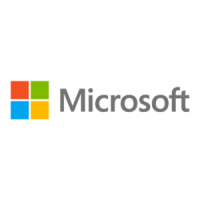Microsoft Exchange 2000 Operations Guide — Version 1.098
ActiveX Data Objects – ADO
A programming layer built on top of OLE DB that allows high-level programming
languages such as Visual Basic and VBScript to access an underlying data store through
a common query language. In this instance, a data store can be Active Directory, the
Exchange 2000 store, or a SQL database.
Administration group
A collection of servers running Exchange 2000 that can be administered as a single unit.
An administration group can include zero or more policies, routing groups, public folder
trees, monitors, servers, conferencing services, and chat networks. When security settings
(permissions) are applied to an administration group, all child objects in the DS tree inherit
the same Access Control Lists (ACLs) as the administration group node. Note that an
administration group does not define the routing topology for messages; this is handled
by routing groups.
ADSI Edit
A Microsoft Management Console (MMC) snap-in used to view all objects in the directory
(including schema and configuration information), modify objects, and set access control
lists on objects.
Asymmetric Cipher
The asymmetric cipher, or public-key cipher, is a means of solving the key management
problem of symmetric key encryption. This system involves using two keys, one for encryp-
tion, and the other for decryption. One of the keys is called the public key, and the other is
called the private key. You can use either the public or private key for encryption, and you
use the opposite key for decryption. The public key is placed in a directory, or a location
available to other users, but the private key is kept in a secure location, and is available
only to the owner of the key pair. By using an asymmetric cipher, the sender and recipient
do not need to agree on a key before sending data.
Block Cipher
A block cipher uses shared-key encryption. It takes a message and breaks it into fixed
length blocks, and applies the shared-key to each block. In most cases, this block size is
64 bits. The decryption operation takes the encrypted blocks, decrypts each with the same
shared-key, and rebuilds the original message.
Bridgehead
A nominated server that acts as a message transfer point between Exchange 2000 routing
groups. This term can also refer to the computer hosting a directory replication connector.
CAST
A variable key length encryption algorithm developed by Carlisle Adams and Stafford
Tavares of Northern Telecom Research. This algorithm supports keys 40 to 128 bits long.

